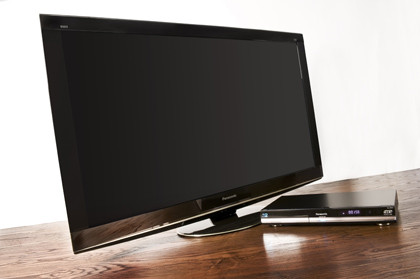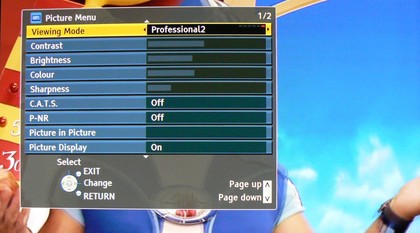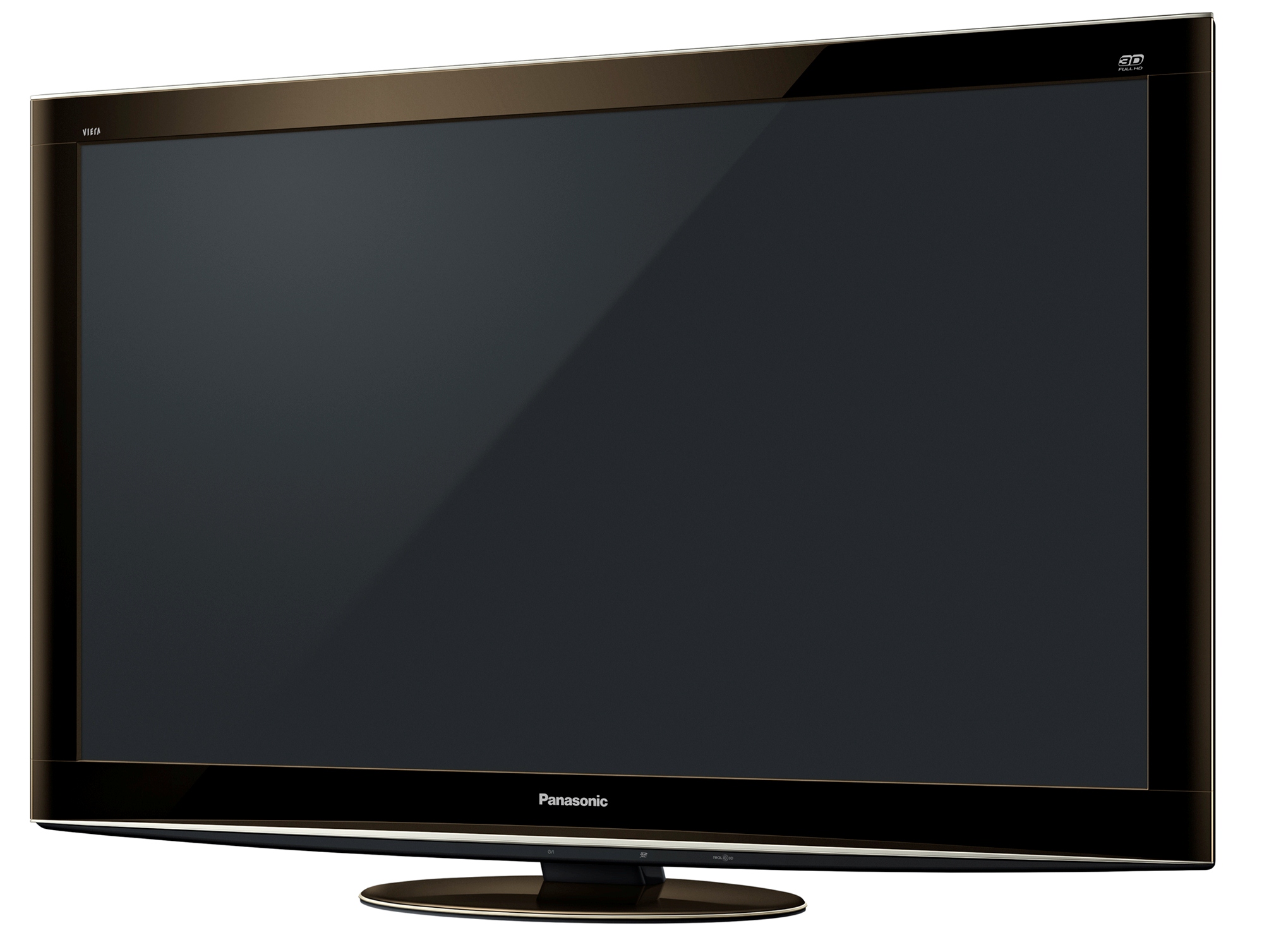Why you can trust TechRadar

As a standard 2D plasma, the P50VT20 comes highly recommended. Image quality is very good.
However, you will need to play around with the settings, as out of the box the image is surprisingly dull in everything bar the Dynamic mode.
The good news is that the screen doesn't penalise you for watching standard definition content – particularly if you use an HDMI input. Standard definition clarity, delivered over HDMI, is excellent. Using the Belle Nuit PAL testchart, the set had no problem resolving high-frequency 5.6MHz graticules, which means fine detail in the SD signal will make it to the screen intact.
There has been some debate about the level of Pioneer Kuro DNA in Panasonic's new range of NeoPDP panels.

While it's absolutely confirmed that Panasonic did acquire a squad of Pioneer TV engineers after that brand pulled out of the plasma TV business, we were told categorically at a recent briefing with senior Japanese engineers that Panasonic holds no Kuro patents.
This line continues to conflict with other coverage, so it may be some time before we unravel exactly what exchange has occurred. For what it's worth we don't think this screen looks at all like the last generation of Kuros.
However, black level performance is still very good. There's some crushing of blacks which means a little shadow detail is lost, but overall it delivers a fine performance.
Hi-def clarity is equally impressive. A test pattern developed by the Advanced PDP Development Centre confirmed this, with no appreciable detail loss during horizontal movement.
A scrolling character map (comprising English and Japanese text in different sizes) showed only negligible image blur regardless of picture brightness (I measured at 100, 50 and 30 per cent luminance). Phosphor lag is next to non-existent.
Greyscale performance is in line with expectations, and doesn't introduce colour compromises. This translates to excellent texture and depth in images.
Colours
Colour fidelity is best described as naturalistic. Reds can seem a little muted, but you should resist the temptation to edge them up as this just oversaturates the picture. Skin tones are generally very good, avoiding the waxy texture lesser LCD screens impart.
Despite the blather which has surrounded the BBC's bitrate reduction image throttling of its hi-def channel, I've got to say it (along with ITV HD and 4HD) looks pretty darn good.
3D performance
The set's 3D performance also shines. Frame sequential (Blu-ray) 3D, Side by Side (Sky) and Top and Bottom 3D systems are all supported.
In an HDMI v1.4 system, the TV will auto detect the signal type and adjust accordingly. We auditioned the screen with Panasonic's DMP-BDT300 Blu-ray player, which sports two HDMIs. One routes straight to the screen, the other was placed in audio only mode and ran through a HDMI v1.3 AV receiver.
3D Blu-ray evaluation material is thin on the ground. We principally used a test disc containing a variety of material, including nature, travelogue footage and movie clips.
Image fidelity can be considered very good, and there's no real evidence of crosstalk, a ringing effect caused by overlapping Left/Right picture frames, and the depth in the image is tangible.
Many analysts expect that the games market will transpire to be the biggest driver for domestic 3D. And after playing Avatar the game, on the Xbox 360, we're inclined to agree.
Again using the Side-by-side format, the title gains an immersive quality which is absent from its 2D presentation.
Through the dark, contrasty Panasonic glasses, the game world appears far more convincing. There's a real sense of virtual reality as you run, drive and boat around Pandora. Picture fidelity is subjectively excellent.
We were also surprised at just how good Sky 3D looks. Unlike Full HD 3D Blu-ray, Sky uses a side-by-side half resolution format, so it's not exactly hi-def. But its showreel certainly didn't look low on fidelity. Sports footage was crisp and vivid, with crowd scenes in particular rich in detail and colour.
3D glasses
The screen comes with two pairs of Active Shutter glasses. They look futuristic but they're not the most comfortable 3D specs we've encountered.
The nose bridge is adjustable but unstable. They also have a pronounced colour amber colour tint, which is difficult to dial out. Interestingly, we found the most effective TV mode for watching 3D content to be the set's Dynamic mode. Normally we'd advise users to avoid this preset like the plague, but through the heavily tinted glasses it works well.
Current page: Panasonic TX-P50VT20B: Picture quality
Prev Page Panasonic TX-P50VT20B: Features Next Page Panasonic TX-P50VT20B: Sound, Value, Ease of UseSteve has been writing about AV and home cinema since the dawn of time, or more accurately, since the glory days of VHS and Betamax. He has strong opinions on the latest TV technology, Hi-Fi and Blu-ray/media players, and likes nothing better than to crank up his ludicrously powerful home theatre system to binge-watch TV shows.

